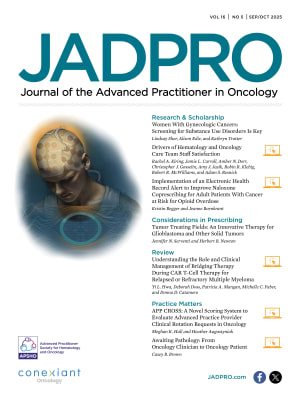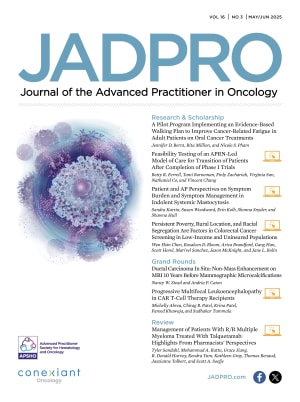Transcript
Hi, everyone. My name is Sarah Profitt. I'm happy to be here today providing updates from the 2025 SOHO meeting held in Houston, Texas in September of 2025.
I'd like to start off by sharing an abstract, reporting updates from a phase III study of an investigational drug in myelofibrosis. This was MANIFEST-2, which was a phase III study, and it was the 72-week follow-up of pelabresib plus ruxolitinib for myelofibrosis. And this is poster number MPN-794. Again, this is pelabresib is the investigational agent here, which is an inhibitor of bromodomain and extra-terminal protein, or a BET inhibitor. This was a phase III, global, randomized, double-blind study of 430 JAK inhibitor-naive patients with intermediate or high-risk myelofibrosis, and they had to have a baseline platelet count of 100 or higher. These patients were randomized in a one-to-one fashion to receive pelabresib plus ruxolitinib or placebo plus ruxolitinib.
Some interesting findings from this study reported, again, at the 72-week follow-up mark were that twice as many patients achieved SVR35, or that spleen volume reduction of at least 35% or greater, and a total symptom score reduction of 50% or greater. So SVR35, TSS50, this was a dual outcome. And double the patients in the pelabresib-ruxolitinib group achieved this outcome, so 31.3%, versus 17.6% of patients in the rux-alone group. Higher hemoglobin responses and fewer patients with transfusion requirements was also seen in the investigational arm. Over half of patients in the pelabresib arm experienced a one-grade or more improvement in bone marrow fibrosis by week 72, which is highlighting that disease-modifying impact of pelabresib when added to JAK inhibition.
Speaking of safety and some adverse effects, there was slightly more thrombocytopenia in the pelabresib arm, was limited to grade one and two, and slightly more dysgeusia with pelabresib as well, although that appeared to be managed easily with dose adjustments of pelabresib.
Over time, we saw the early imbalance in the proportions of patients that transformed to blast phase or the leukemic transformation. That really balanced out between groups over time with this longer follow-up, and the overall incidence of transformation appeared to be similar to what we see in the myelofibrosis disease course, so that was encouraging follow-up data from this study as well.
So overall, great efficacy outcomes with adding pelabresib to ruxolitinib. Again, this is an investigational BET inhibitor, not yet FDA-approved, although we do expect some regulatory decision relatively soon. The PDUFA date was set in October of 2025, so I anticipate we'll hear more about updates on pelabresib and myelofibrosis soon.









